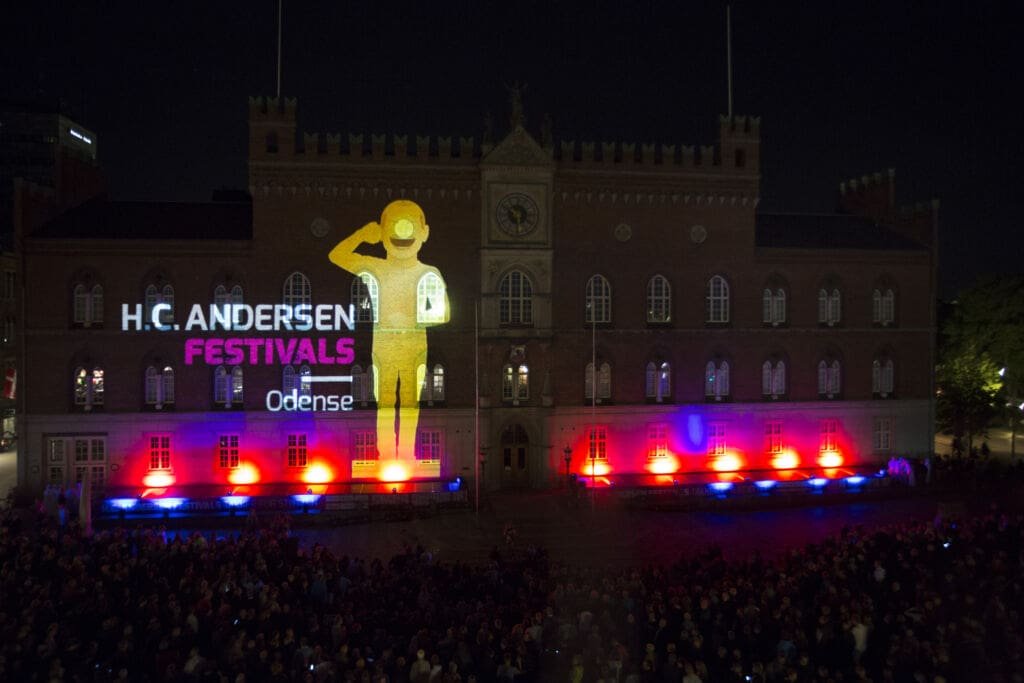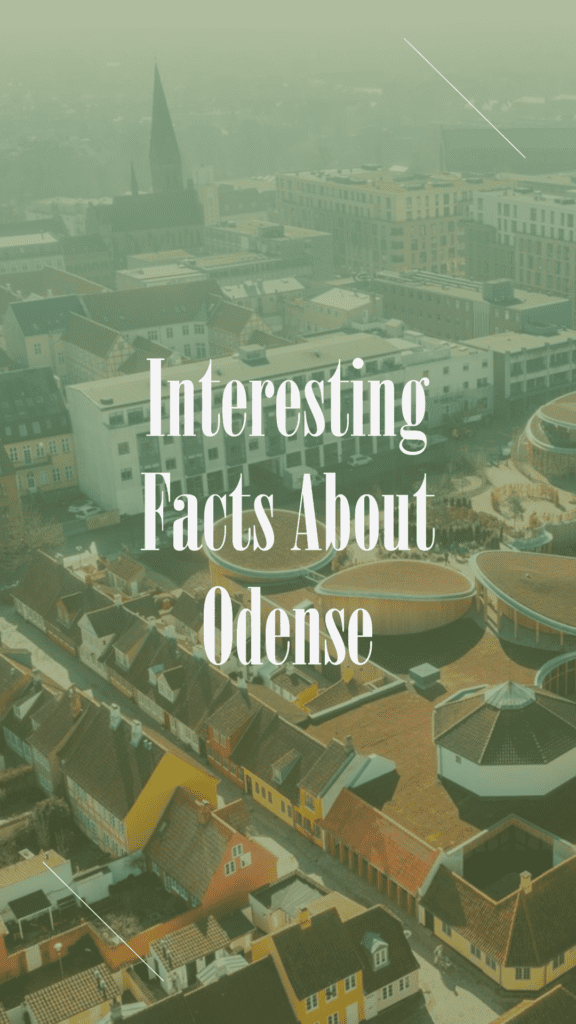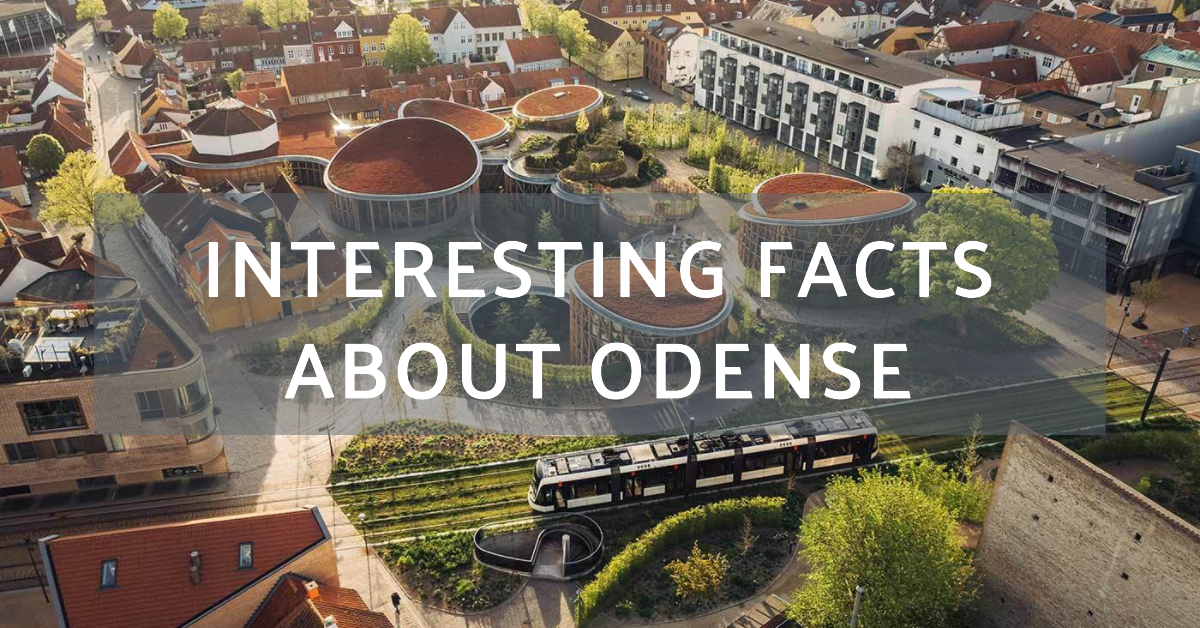Facts About Odense
Odense is the third-largest city in Denmark and has a rich history and cultural significance.
Here are some interesting facts about Odense:
Hometown of Hans Christian Andersen
Odense is famously known as the birthplace of Hans Christian Andersen, one of the world’s most renowned fairy tale authors. You can visit the Hans Christian Andersen Museum in the city to learn more about his life and work.
Hans Christian Andersen was born on April 2, 1805, in Odense, Denmark. Despite limited formal education, Andersen was a voracious reader and had a strong imagination from a young age. He left home at the age of 14 to seek his fortune as an actor and writer.
Andersen is famous for his fairy tales, which include classics like “The Little Mermaid,” “The Ugly Duckling,” “Thumbelina,” “The Emperor’s New Clothes,” “The Princess and the Pea,” and “The Snow Queen.”
Andersen died on August 4, 1875, in Copenhagen. His legacy is celebrated annually on his birthday, April 2nd, which is observed as International Children’s Book Day. The Hans Christian Andersen Award, established in 1956, is considered one of the most prestigious awards in children’s literature.
HC Andersen Festival
Odense hosts the HC Andersen Festival to celebrate the life and works of Hans Christian Andersen. The festival features performances, parades, and various activities for all ages.
The HC Andersen Festival is dedicated to honouring the legacy of Hans Christian Andersen, who was born in Odense in 1805. Andersen’s fairy tales, such as “The Little Mermaid,” “The Ugly Duckling,” and “The Emperor’s New Clothes,” are beloved by people of all ages around the world.
The festival offers a diverse and engaging program of events and activities. These can include storytelling sessions, theatrical performances of Andersen’s tales, art exhibitions, live music, dance performances, and street theatre.

Historic Old Town
Odense’s historic city centre is a charming area with well-preserved medieval buildings and cobblestone streets.
The Old Town is designed to recreate the atmosphere of a traditional Danish market town during the 18th and 19th centuries. It provides visitors with a glimpse into the daily lives of people from that era.
The Old Town hosts a variety of cultural events throughout the year, such as historical reenactments, festivals, and themed exhibitions, providing an interactive and educational experience for visitors.
Odense Cathedral1
St. Canute’s Cathedral, also known as Odense Cathedral, is a stunning Gothic cathedral that dates back to the 13th century.
Odense Cathedral is one of Denmark’s oldest and most important churches. The cathedral is named after Saint Canute, also known as Canute IV, who was a Danish king in the early 12th century. He was later canonized as a saint by the Catholic Church. The cathedral’s dedication to him reflects his significance in Danish history and Christianity.
The cathedral is an excellent example of Romanesque and Gothic architectural styles. Its construction began in the 12th century, and it underwent several architectural changes and additions over the centuries, including the transition to Gothic style.
The cathedral has historically served as a burial place for Danish royalty. Several members of the Danish royal family, including King Canute IV, Queen Margrethe I, and King Christian III, are interred in the cathedral.
The cathedral has undergone numerous restorations and renovations over the centuries to maintain its structural integrity and historical significance.
Interesting Cologne Cathedral Facts
Danish King Canute the Holy was murdered in Odense2
King Canute IV of Denmark, also known as Canute the Holy or Knud IV den Hellige in Danish, was murdered in Odense. Canute the Holy is an important figure in Danish history and is considered a saint in the Roman Catholic Church.
King Canute the Holy reigned as the King of Denmark from 1080 until his death in 1086. He is notable for his efforts to spread Christianity in Denmark and is credited with the Christianization of the Danish people.
On July 10, 1086, King Canute the Holy was assassinated in the Church of St. Alban in Odense, which was also known as St. Alban’s Priory. He was killed during a revolt led by noble conspirators, including his own brother, Olaf I of Denmark. The circumstances of his death were brutal, and he was martyred for his faith.
The assassination of King Canute the Holy in Odense is a significant event in Danish history, reflecting the religious and political tensions of the time. Today, Saint Canute is commemorated not only in Denmark but also in the broader Christian tradition.

Economic Center
The city has a strong economy with a focus on industries such as manufacturing, technology, and healthcare. It plays a significant role in the region’s economic development.
Odense has a strong maritime and shipping industry, with the Odense Steel Shipyard being a significant player. This shipyard has a long history of constructing commercial and naval vessels.
The city is home to a diverse range of manufacturing companies, including those involved in machinery, electronics, and food production. These industries contribute to the local and regional economy.
Odense has been making strides in the field of robotics and automation. The city is known as Denmark’s “Robot City” and is a hub for companies and research institutions focused on robotics, artificial intelligence, and automation technologies.
Due to its strategic location on the island of Funen, Odense serves as a transportation and logistics hub. It has good road and rail connections to other major cities in Denmark.
Odense has been fostering a growing startup ecosystem, particularly in the fields of robotics and technology. Incubators, accelerators, and entrepreneurial initiatives support startup growth in the city.
Odense a Viking legacy
Odense is situated on the island of Funen, which was strategically located in the heart of the Viking Age maritime routes. Vikings from this region, including those from Funen, engaged in trading and exploration expeditions throughout Northern Europe and beyond.
There is evidence of Viking settlements on Funen, including archaeological finds such as burial mounds, artefacts, and ancient fortifications.
While Odense is better known for its connections to Hans Christian Andersen, it’s worth noting that Vikings would have played a role in the broader history of the region, including the development of early Danish society.
Odense Etymology
The name “Odense” has an interesting etymology that can be traced back to the Viking Age and Old Norse origins.
The first part of the name, “Od,” is believed to derive from the Old Norse word “óðr,” which means “spirit,” “mind,” or “fury.” This term could have been associated with a pagan deity or a significant spiritual or sacred place.
The suffix “-ense” is a common suffix used in many Danish place names. It signifies a connection to or location within a specific area or region.
When combined, “Odense” can be interpreted as the “place associated with a deity or a sacred spirit.” The name reflects the importance of the area in the past, possibly as a significant religious or spiritual site during the Viking Age.
Odense Twinned Cities
Odense has 20 twin cities
Since 1988, Columbus, Ohio, and Odense, Denmark, have been sister cities. The sister-city relationship between these two cities reflects a commitment to cultural exchange, cooperation, and friendship between the United States and Denmark.
In 2016, Greater Columbus Sister Cities International led a group of Ohio State University’s business students on an educational visit to Odense focused on sustainability culture in Denmark.
- Brno, Czech Republic
- Columbus, United States
- Funabashi, Japan
- Groningen, Netherlands
- Iksan, South Korea
- Izmir, Turkey
- Katowice, Poland
- Kaunas, Lithuania
- Kyiv, Ukraine
- Klaksvík, Faroe Islands
- Kópavogur, Iceland
- Norrköping, Sweden
- Östersund, Sweden
- Petah Tikva, Israel
- Schwerin, Germany
- Shaoxing, China
- St Albans, England
- Tampere, Finland
- Trondheim, Norway
- Upernavik, Greenland
The tallest tower in Odense3
The tallest tower in Odense, Denmark, is the “Odinstårnet” or “Odin Tower.” This tower is a radio and television transmission tower located in the Odense district of Vollsmose.
Campus Kollegiet is a student housing complex located in Odense. It’s the tallest residential tower In Odense and the 22nd tallest in Denmark, standing at 164ft.


